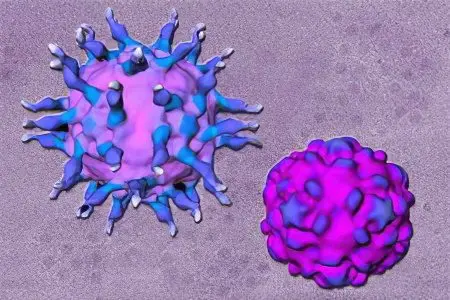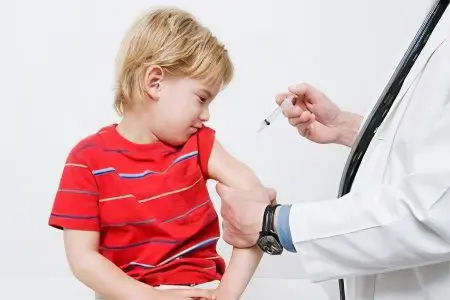Contents
What is poliomyelitis?
Polio is an acute infectious disease caused by a poliovirus belonging to the picornavirus family, the genus Enterovirus. The manifest form of poliomyelitis is accompanied by damage to the nervous system: the appearance of paresis and paralysis as a result of dysfunction of the motor neurons of the anterior horns of the spinal cord.
Poliovirus is ubiquitous, but most often it manifests itself in countries of Africa and Asia, where there is a year-round circulation of its strains. In 1988, WHO set itself the task of completely eradicating this pathology in the next 12 years. The only solution was to be the vaccination of the children’s stratum of the population in the amount of more than 85%. It was not possible to fully achieve the goals set, although it is impossible not to note the huge decrease in the incidence of polio.
Currently, isolated cases of the disease are periodically recorded. They are associated with non-compliance with the regulated terms of vaccination, as well as with the refusal of some parents to immunize their children against poliomyelitis, in connection with which there is an incomplete coverage of the population with professional vaccinations, an insufficient percentage of the immune layer. All this generally contributes to the preservation and circulation in nature of “wild” strains of the virus.
Polio symptoms

The duration of the incubation period is from 5 to 35 days (usually 1-2 weeks). The typical form is spinal.
It has the following periods:
preparalytic (3-6 days). Characterized by a two-fold increase in body temperature with an interval of 2-3 days. There are symptoms of damage to the upper respiratory tract: runny nose, nasal congestion, sore throat, dry cough. Dyspeptic symptoms are possible: nausea, single or double vomiting, abdominal pain. In the future, migraine, myalgia, increased skin sensitivity appears.
paralytic period (lasts from several days to 2 weeks). It is characterized by the appearance of flaccid, asymmetric paralysis and paresis. Temperature rises are no longer noted, the phenomena of intoxication are reduced. In rare cases, the functional state of the pelvic organs suffers. Depending on the level of damage to the structures of the spinal cord, the localization of paresis and paralysis varies. When the cervical and thoracic parts of it change, movement disorders in the arms and neck muscles are noted. If the pathological focus is located below, then paralysis of the lower extremities occurs (this option is most common). With unilateral paresis of the abdominal muscles, its asymmetric protrusion is formed, with bilateral paresis, a “frog” abdomen is formed. Already from 10-14 days, patients have signs of muscle atrophy. The appearance of paralysis always comes unexpectedly. Often they appear in the morning, when the patient has just woken up. Paralysis can be transient and pass completely without consequences or be persistent. In the latter case, the maximum severity of neurological symptoms mainly reaches the second day.
recovery period (may last several years). Recovery is most rapid in the first six months, then its pace noticeably slows down. With deep damage to muscle tissue, i.e. when the motor neurons responsible for it in the spinal cord die, the repair process becomes impossible.
residual period or period of residual phenomena. It is characterized by persistent flaccid paralysis, muscle atrophy, contractures, bone deformities, osteoporosis. Even after many years, polio survivors may suffer from rapid muscle fatigue, fasciculations, and atrophy of individual muscle groups.
The paralytic form occurs in one of two hundred cases of the disease, but nevertheless it is she, being the most difficult, that is almost always subject to correct diagnosis.
In addition, there are other forms of this disease:
Inapparant. It is expressed in a healthy virus carrier. Clinically, the pathology does not manifest itself at all and is almost never diagnosed. It can only be detected by virological examination.
abortion form. It is characterized by signs of a general infectious disease without the manifestation of neurological symptoms. There is an increase in body temperature, sneezing, sore throat, cough, headache, nausea, vomiting, abdominal pain. The patient fully recovers in 3-7 days.
Meningeal the form. Manifested by symptoms of acute serous meningitis. In addition to signs of a general infectious disease, pain in the back and legs appears, which is pathogenetically associated with the involvement of the roots of the spinal cord in the pathological process. Full recovery can be achieved only after 3-4 weeks from the onset of the disease.
Is polio contagious? Pathogenesis (development) of its symptoms

Polio? contagious (contagious) infectious disease, the greatest susceptibility to which are children of preschool age.
Source of infection? a sick person or a virus carrier who excretes a pathogenic virus with feces or nasopharyngeal mucus.
Ways of infection
Fecal-oral. The cause of infection is mainly products contaminated with microorganisms. Flies play an important role in spreading the infection, which is probably why summer-autumn seasonality is observed in countries with a temperate climate.
Airborne. Patients shed the virus when they sneeze or cough.
Particularly dangerous in terms of infection are those who carry diseases asymptomatically (in inapparat form) or with nonspecific manifestations (slight fever, general weakness, fatigue, headache, nausea, vomiting) without signs of CNS damage. Such people can infect a large number of contacts with them, because. it is very difficult to make a diagnosis of the sick, and, consequently, these persons are practically not subjected to isolation.
Poliovirus enters the human body through the nasopharynx, multiplies in the epithelial lining of the pharynx and intestines, and then penetrates into the cervical and peritoneal lymph nodes. Further, the poliovirus by hematogenous (through the blood) and lymphogenous (through the lymphatic vessels) enters the liver, spleen, bone marrow and accumulates there. When it enters the blood a second time, causing a second wave of fever, the poliovirus seeps through the blood-brain barrier and infects the central nervous system.
Consequences of polio
Depending on what form of the disease a person has had, the consequences of polio may differ. So the abortive form passes on average after 7 days, leaving absolutely no consequences. Full recovery occurs after the transferred meningeal form of the disease, but after a much longer period of time.
Even the most complex, paralytic form can go absolutely without a trace, and all functions of the central nervous system affected by poliovirus will be restored. However, if paralysis and paresis were of a deep, persistent nature, then it would be impossible to achieve an absolutely complete restoration of the affected parts of the nervous system. After a severe paralytic form, muscle atrophy, osteoporosis, and limb deformities remain. In a number of cases, articular contractures remain with a limited range of active and passive movements in them, habitual dislocations, paralytic curvature of the spinal column, deformities of the feet, and clubfoot. Children after poliomyelitis are usually severely retarded in physical development, often they have a shortening of the affected limb.
If a patient develops central and peripheral changes in breathing, disorders of the cardiovascular system, and paralysis of the smooth muscles of the gastrointestinal tract, in most cases the disease ends in death.
Polio prevention

Primary prevention, the measures of which are aimed at preventing the onset of the disease, is divided into non-specific and specific.
Non-specific is aimed at general strengthening of the body, increasing its resistance to various infectious agents (hardening, proper nutrition, timely sanitation of chronic foci of infection, regular physical activity, optimization of the sleep-wake cycle, etc.), the fight against insects that are carriers of pathogenic microorganisms ( various types of pest control), personal hygiene (primarily washing hands after the street and after going to the toilet), careful processing of vegetables, fruits and other products before eating them.
Specific prevention consists in carrying out vaccination against poliomyelitis. In order for poliomyelitis as a disease to be completely defeated, 95% of the entire population of the globe must be covered with preventive vaccinations.
Polio vaccination is now included in the national mandatory immunization schedule for children as young as three months of age. Children are vaccinated three times with an interval of 45 days. Shortening the time between vaccinations is unacceptable, with the exception of only emergency cases. Each child is then revaccinated with myelitis vaccines at 18 months, 20 months, 7 and 14 years of age.
The first two stages of vaccination are carried out by injection with inactivated drugs. The most common monovaccine is Imovax-polio, but complex vaccines, such as Infanrix, can also be used. Next, the child is vaccinated and revaccinated orally with an attenuated (weakened) live vaccine.
If there are other children unvaccinated against poliomyelitis in the family at the time of immunization of the child with a live vaccine, then in order to prevent the occurrence of a vaccine-associated disease, contact between persons should be interrupted for a two-month period. The same applies to unvaccinated children organized in children’s educational institutions.
All polio vaccines are non-reactogenic and are generally well tolerated by children. Rarely, there is a violation of general well-being (temperature, loose stools, loss of strength), as well as local changes (the appearance of infiltration and redness at the injection site). Such conditions do not require treatment, they pass on their own within three days.
In case of establishing contact with a patient with poliomyelitis, an emergency vaccination with a live attenuated vaccine is carried out without taking into account previous vaccinations. It is also possible to use human immune gamma globulin.
After hospitalization of the patient (in order to prevent infection of other persons) in the room where he was, a thorough disinfection should be carried out. General cleaning with the use of disinfectants is necessary, all toys must be washed with soap, linen and dishes are subject to boiling.
It is important to carry out timely disinfection. Medical supervision of persons in contact with a patient with poliomyelitis is carried out for 3 weeks. Visiting educational institutions for the duration of the imposed quarantine is strictly prohibited.









